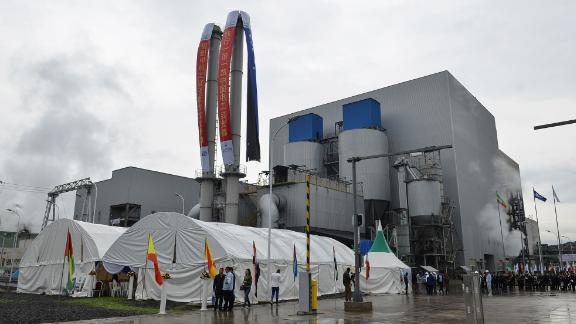

Forests provide social benefits such as improved health, employment, education, recreation, and community building. Urban forests absorb carbon dioxide and can be used to mitigate regional and global warming. Eucalyptus species predominate in the city’s forests and mainly found in the northern part of the city.

Urban forest in Addis Ababa covers over 5000 ha of land. Urban forests are increasingly important due to their role in sequestrating and storing carbon and thus helping to meet climate mitigation goals.

Because of their significance in sequestering and storing carbon, urban forests are becoming significant in meeting climate mitigation goals. The city faced challenges from flooding, threats to human comfort and environmental injustice. Encroachment, illegal cuttings and the planting of inappropriate species all have an impact on urban forests of Addis Ababa. The high rate of urbanization, use of fuel wood and charcoal as biofuel, have all contributed to the degradation of green spaces in Addis Ababa. Īddis Ababa, the capital and the most populated city of Ethiopia a rapid and unplanned expansion and commercial development, along with population pressure is deteriorating the city environment with time. It accounts for 72% of total anthropogenic greenhouse gas emissions and accounts for 9-26% of the greenhouse effect. Carbon dioxide (CO2) is a common greenhouse gas and a major contributor to global warming. Carbon dioxide emissions and climate change are two of the most urgent challenges in today’s society.

Cities will be exposed to climate change from greenhouse gas induced radiative forcing, and localized effects from urbanization such as the urban heat island. Urbanization is estimated to result in 6 billion urban dwellers by 2050. Urban areas are home to more than half of the world’s population. Urban forests can help to mitigate the effects of climate change by lowering atmospheric carbon dioxide. In addition to reducing atmospheric carbon dioxide through sequestration, which is vital for climate change mitigation, urban trees are also beneficial for recreational, medical, aesthetic, and biodiversity conservation. The variations of carbon stocks in the different urban forest types relate to area, density and size of trees available in each site. The mean carbon in dead litter and soil carbon were 6.33 ± 5.72 t ha -1 and 121.02 ± 48 t ha -1 respectively. The mean carbon in the above ground and below ground biomass is 110.84 ± 46.33 t ha -1 and 21.68 ± 9.31 t ha -1 respectively. The selected research papers used similar allometric equations to calculate carbon stock of the different carbon pools. Total number of identified papers were 11 that studied carbon sequestration potential of urban forests in Addis Ababa and of this church forests (three), public parks (three), botanical garden (one), Mountain forest (Three) and KMU compound included in the review of this paper. The objective of this review was to appraise research findings and to summarize the most important literatures on the role of urban forests for carbon emission reduction in Addis Ababa. Excusable ignorance is limited to the extent that CO 2 emissions are but one manifestation of a process that has had a wide range of long-known harms.Urban forests improve the microclimate and air quality. That said, it has long been understood that the processes by which high-income countries industrialised were socially and ecologically harmful in other ways (eg, colonialism, land enclosures, the slave trade, extractivism, deforestation, pollution, and so on), which, like emissions, have been generally in proportion to the scale and intensity of industrial activity. This does not pertain to the question of responsibility for climate breakdown in the causal sense (ie, certain countries caused excess emissions regardless of whether they knew it), but it does raise questions about the extent of liability. Some might cite excusable ignorance as justifying a more restricted historical accounting, to distinguish between knowing contributions to harm versus accidental ones. One has to do with the debate over appropriate base years. There are some limitations to this analysis that are worth mentioning.


 0 kommentar(er)
0 kommentar(er)
